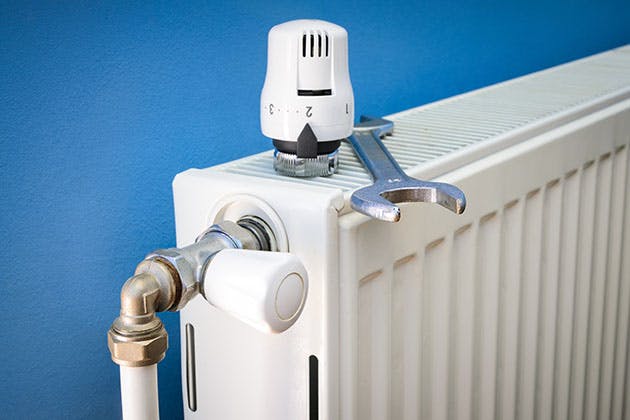A simple Google search for the term "types of central heating systems" can return a plethora of confusing results. There's a lot of material on a lot of different heating concepts, boiler types, and gas procedures, all with a lot of jargon. I mean, it can't be that difficult, right? It's not.
Our Heating Engineers in Canterbury, Whitstable, and Ramsgate are here to assist you to understand the basics of the various types of central heating systems. There's no muss, no fuss, and no scary gas engineer jargon. Whether you're simply wondering about central heating principles, need to know what system is in your home, or are contemplating upgrade alternatives, this is information that anybody can comprehend.

What are the types of central heating systems?
Let's start with the most basic details. How many types of central heating systems? There are three, that can be found in modern British homes.
They are as follows:
- Conventional Central Heating - Sometimes called Gravity-fed central heating systems
- Combination Boiler Systems - Boiler systems that heat both gas and water at the same time.
- Pressure System Central Heating - This system circulates water throughout your property using mains pressure.
Want to learn more? We'll go over each sort of central heating system individually below.
Conventional Central Heating
The most prevalent sort of central heating system in the home used to be the conventional system. Modern alternatives have reduced usage, particularly in new construction, but traditional systems can still be found in many older homes and buildings.
So, how does a conventional system work?
The central heating system is unplugged and the cold water is controlled by mains pressure. A hot water tank is located high up in the residence, usually in the attic or a cabinet on the top floor, to provide hot water for heating and taps. This water is then heated in the boiler.
By the natural pull of gravity, water can flow down into the lower floors through your plumbing, into radiators, and out of taps once it has warmed up.
This sort of central heating system has witnessed a significant drop in popularity due to two factors:
- Because gravity-fed systems are subject to physical constraints, they have pressure restrictions. Additional systems must be constructed to enhance pressure.
- Heating a hot water tank can be inefficient because not all of the water is consumed, but energy is necessary to heat and maintain the temperature.
Combi Boiler Systems
If gravity-fed central heating systems were the standard in previous decades, the combi boiler now holds that position. Because of its effectiveness and compactness, this type of central heating system has gained popularity in recent years.
So, how do combi boiler systems work?
Combi boilers heat water at the source. The combi boiler generates heat as soon as you turn on the hot water tap or switch on the boiler. There is no hot water storage because all heating is provided by the appliance at the point of use.
Compared to conventional central heating systems, has a number of advantages:
- Combi boilers, as previously said, are highly efficient. You only heat as much water as you require. There is no waste in this process.
- Because the water comes through the boiler cold and is then heated, it is run at mains pressure. This maintains a consistent level of pressure throughout the house.
- There is no need for a hot water tank when heating is done directly through the boiler. This is especially handy in smaller homes where a hot water tank would be difficult to accommodate.
Combi boilers, of course, have their drawbacks. They are more technologically advanced, with more intricate inner workings, and thus have more potential for failure than traditional systems. The amount of water pressure you have is also determined by how much you use it. Because combi boilers have a limited capacity for producing hot water, attempting to run two hot water taps at the same time will result in a low flow rate. This means it isn't appropriate for large homes with several residents.
Pressurised Central Heating Systems
How does a pressurised central heating system work?
The operation of a pressurised central heating system is similar to that of a combi boiler. Instead of heating water in a hot water tank, mains water is heated directly, reducing waste and conserving space over traditional systems.
The pressurised system, on the other hand, differs from the combi boiler in that the water is heated by a water cylinder rather than the boiler itself.
A water cylinder is a tank that heats water as it passes through it. It is a compact unit that can be conveniently incorporated into the home. As a result, hot water may be dispensed at mains pressure from several taps at the same time, making it ideal for large homes.
- Installing and maintaining pressure systems is costly. They must be checked annually due to their nature. Because of their complicated design, installation operations are more detailed than with other systems, necessitating the use of highly skilled plumbers who charge more. They are an investment that will pay off in the long run.
- This system is a terrible choice if your local mains pressure is low. Installation of pressurised systems in a low-pressure environment is not a smart idea because it is reliant on external forces beyond your control.
Get professional advice from a heating engineer
Looking for qualified heating & gas engineers in Canterbury, Whitstable, and Ramsgate, or more information about the types of central heating systems and what is right for your property? Get in touch with our heating engineers at Atom Gas Lyd today!


